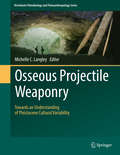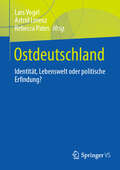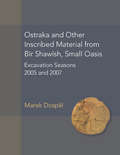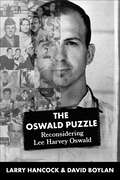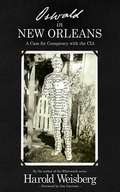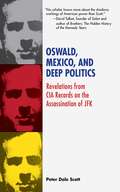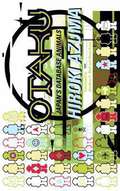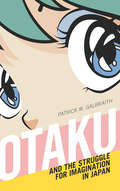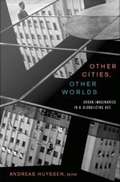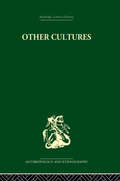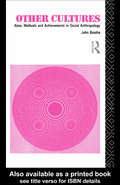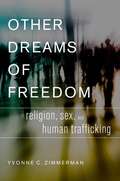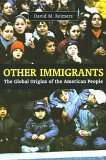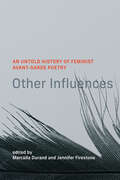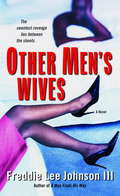- Table View
- List View
Osseous Projectile Weaponry
by Michelle C. LangleyThis volume presents the current state of knowledge on the osseous projectile weaponry that was produced by Pleistocene cultures across the globe. Through cross-cultural and temporal comparison of manufacturing methods, design, use methods, and associated technology, chapters in this volume identify and discuss differences and similarities between these Pleistocene cultures. The central research questions addressed in this volume include: (a) how did osseous weaponry technology develop and change through time and can these changes be tied to environmental and/or social influences?; (b) how did different Pleistocene cultures design and adapt their osseous weaponry technology to their environment as well as changes in that environment?; and (c) can we identify cultural interaction between neighboring groups through the analysis of osseous weapons technology -- and if so -- can we use these items to track the movement of peoples and/or ideas across the landscape? Through addressing these three central research questions, this volume creates an integrated understanding of osseous technology during a vital period in Modern Human cultural development which will be useful for students and advanced researchers alike.
Ostdeutschland: Identität, Lebenswelt oder politische Erfindung?
by Astrid Lorenz Lars Vogel Rebecca PatesGibt es eine ostdeutsche Identität? Bezeichnet „ostdeutsch“ analytisch treffend spezifische Lebensumstände oder ist sie eine politische Erfindung? Der Band informiert hierzu aus wissenschaftlicher Sicht. Politikwissenschaftliche, soziologische, wirtschafts- und finanzwissenschaftliche Beiträge untersuchen dies z.B. anhand der Wirtschaftskraft, des Wahlverhaltens, der Parteien, der Zivilgesellschaft, von Bürgerdialogen, Demokratieförderprogrammen oder Elitenbildern. Die Analysen zeigen Ostdeutschland und ostdeutsch als weiterhin sinnvolle analytische Kategorien, die auch gesamtdeutsche Entwicklungen zu verstehen helfen. Zwar ist ein Teil von Ost-West-Unterschieden auf feingliedrigere soziale und regionale Differenzen zurückzuführen (Kompositionseffekte). Dennoch verbleiben auch unter Berücksichtigung dieser Merkmale genuine Besonderheiten Ostdeutschlands (Kontexteffekte). Vor diesem Hintergrund bildet Ostdeutschland eine sozial relevante Lebenswelt und ein kontroverses Identitätsangebot.
Ostia in Late Antiquity
by Douglas BoinOstia Antica was Rome's ancient harbor. Its houses and apartments, taverns and baths, warehouses, shops and temples have long contributed to a picture of daily life in ancient Rome. Recent investigations have revealed, however, that life in Ostia did not end with a bang but with a whimper. Only on the cusp of the Middle Ages did the town's residents entrench themselves in a smaller settlement outside the walls. What can this new evidence tell us about life in the later Roman Empire, as society navigated an increasingly Christian world? Ostia in Late Antiquity, the first academic study on Ostia to appear in English in almost 20 years and the first to treat the Late Antique period, tackles the dynamics of this transformative time. Drawing on new archaeological research, including the author's own, and incorporating both material and textual sources, it presents a social history of the town from the third through the ninth century.
Ostraka and Other Inscribed Material from Bir Shawish, Small Oasis: Excavation Seasons 2005 and 2007 (American Studies in Papyrology #54)
by Marek DospelInformal documents and remains of material culture, when analyzed properly, offer a unique window into the daily lives and workings of ancient civilizations. Published here in their archaeological context and with any relevant artifacts, the documents and inscriptions excavated recently in Egypt's Western Desert represent a valuable addition to our meager documentation of the Bahriya Oasis in the first centuries CE. This is the first comprehensive treatment of an archaeological dataset from the archaeological exploration of Bir Shawish. Dating to around 400 CE, these primary historical sources include documentary texts written on ostraka, informal inscriptions on various ceramic objects, plus a group of incised lids. The core of the volume consists of an annotated edition and analytical indices. This is prefaced by the historical and archaeological context and is followed by a synthesis of selected issues inherent to the published material. The book includes appendices and pictures of all published objects. Doubling the number of texts and inscriptions published to date from the Small Oasis, this new corpus furthers our understanding of the economic, administrative, and social history of Late Antique Egypt.
Ostraka in the Collection of New York University (ISAW Monographs)
by Gert Baetens, Roger S. Bagnall, Clementina Caputo, Élodie Mazy, and David M. RatzanA comprehensive edition and commentary of 77 ostrakaOstraka in the Collection of New York University is a comprehensive edition and commentary of 77 ostraka, or potsherds with ancient texts written on them, from Greco-Roman and late antique Egypt. Seventy-two of these ostraca are housed in NYU Special Collections, originally purchased by Caspar Kraemer in 1932, then the chair of the NYU Classics Department. Although Kraemer advertised the imminent publication of the texts in 1934 and later collaborated with the famed papyrologist Herbert Youtie, neither completed the project. The ostraka in this small collection span the 2nd century BCE to the 8th century CE and include both Greek and Coptic texts. The majority, however, form a coherent dossier of tax receipts related to mortuary activities in Upper Egypt during the reign of Augustus (texts 7-70, dated from roughly the last quarter of the 1st century BCE to 12 CE). The five ostraka published in this volume not held by NYU include one that had been part of Kraemer’s original purchase but was subsequently lost (thankfully preserved in a photograph in Youtie’s archive at the University of Michigan), and four ostraka now held by the Los Angeles County Museum of Art. The latter four texts were purchased separately and published previously, but clearly belong to the same group of texts. They are included in this volume both for the sake of completeness and because the present authors were able to improve the readings in light of the context provided by the dossier as a whole. In addition to the scholarly edition of these texts, the volume contains a full discussion of their provenance, the taxes involved, the taxpayers and tax-collectors, and a ceramological analysis of the sherds as media for these texts.The book will be of interest primarily to specialists in papyrology and scholars who study the economic history of the ancient Mediterranean, Hellenistic Egypt, the Roman empire, and papyrology.
Oswald Puzzle: Reconsidering Lee Harvey Oswald
by Larry Joe Hancock David BoylanSole assassin of President Kennedy, or the "fall guy" for a conspiracy? Or something else? Among the many enigmas in the saga of the Kennedy assassination, Lee Harvey Oswald remains among the most enigmatic. The Warren Commission painted a portrait of a lone malcontent, but still could find no motive for his alleged actions. Some conspiracy books attempt to turn Oswald into a deep cover intelligence agent, always on assignment whether defecting to the Soviet Union or distributing pro-Castro pamphlets. Other authors ignore Oswald altogether. In The Oswald Puzzle, experienced researchers Larry Hancock (Someone Would Have Talked, Tipping Point) and David Boylan square the circle. Taking the full measure of the same data the Warren Commission collected, they paint a detailed picture of Oswald, a man that may surprise you. And then, using their expertise and the vast declassified records now available, they tell the story of how Oswald appeared on the radar of fervent anti-Castro activists in New Orleans in 1963, and how he was then turned into their pawn. Hancock and Boylan, in considerable detail, provide a scenario which reconciles what we know about Oswald with the massive evidence of conspiracy. Has the puzzle of Lee Harvey Oswald finally been solved? Was he truly just a patsy? The Oswald Puzzle provides the answers.
Oswald in New Orleans: A Case for Conspiracy with the CIA
by Jim Garrison Harold WeisbergHarold Weisberg was foremost among the early trailblazers who saw the inadequacy of the Warren Report's solution to the crime of the century. He tirelessly petitioned the government and used the courts to force release of withheld documents, and wrote dozens of books and manuscripts on the subject.Oswald in New Orleans focuses on the strange 1963 summer during which Lee Harvey Oswald was in New Orleans, where his apparent "lone nut" pro-Castro activities have puzzled researchers for many years. This book discusses the many odd stories and colorful personalities of the Oswald-New Orleans scene: Dean Andrews, David Ferrie, Sylvia Odio, Orest Pena, Carlos Bringuier, Loran Hall, and others. Published in the early days of the ill-fated Garrison investigation, this book remains an important analysis of those stories and persons.Taken in the context of Weisberg's numerous books on the subject, Oswald's time in New Orleans brings clarity to the events that would follow. Originally published in 1967, Oswald in New Orleans is no less the startling and shocking narrative today than it was when first released, and the painstakingly thorough investigative research and analysis that Weisberg has conducted makes his work essential to understanding the assassination of John F. Kennedy.
Oswald, Mexico, and Deep Politics: Revelations from CIA Records on the Assassination of JFK
by Peter Dale ScottPeter Dale Scott has written extensively on the Kennedy assassination and other dark corners of the American political scene. His encyclopedic knowledge enables him to connect the dots among the players, the organizations, and the unacknowledged collusions--the deep politics-- of our often troubled political system.Deep Politics on Oswald, Mexico, and Cuba, originally published in 1995, narrows the focus of Scott's earlier Deep Politics and the Death of JFK. Scott delivers the most detailed treatment yet of the mysterious sojourn of Lee Harvey Oswald (or someone using his name) to Mexico City in the fall of 1963. Was this trip a key aspect of the framing of Oswald, was it an approved intelligence operation, or was it perhaps both?It is now known that allegations of Communist conspiracy in the wake of the JFK assassination, emanating mostly from Mexico City, caused Lyndon Johnson to put together a "blue ribbon commission" to investigate what happened in Dallas. Scott explains through meticulous research and analysis exactly why LBJ would want the Warren Commission to rush to a conclusion, and the far-reaching political ramifications of the commission's public findings.Scott's analysis suggests the evidence from Mexico City was part of a frame-up, making Deep Politics on Oswald, Mexico, and Cuba an essential piece of research and analysis, shedding new light on the Communist conspiracy allegations behind the JFK assassination.
Ota Benga: The Pygmy in the Zoo
by Phillips Verner Bradford Harvey BlumeIn 1904 Samuel Phillips Verner, an anthropologist and African explorer, brought a young Pygmy man named Ota Benga from the jungles of the Belgian Congo to the United States. Ota Benga joined a group of indigenous people from around the world in an anthropological exhibit at the St. Louis World's Fair. After the fair he remained in the U.S., and, for more than a week in 1906, was displayed in the primate house at the Bronx Zoo. The upheavals around this exhibition are core to this book, but it encompasses far more. Through the story of Ota Benga the authors examine European colonialism, race relations in the U.S. in the early 20th century, and the concept of the "white man's burden." They create a powerful and moving picture of Ota Benga, a man raised to live by hunting and gathering, who died in 1916 in Lynchburg, Virginia after attempting to step from one world to another.
Otaku
by Hiroki Azuma Jonathan E. Abel Shion KonoIn Japan, obsessive adult fans and collectors of manga and anime are known as otaku. When the underground otaku subculture first emerged in the 1970s, participants were looked down on within mainstream Japanese society as strange, antisocial loners. Today otaku have had a huge impact on popular culture not only in Japan but also throughout Asia, Europe, and the United States.Hiroki Azuma's Otaku offers a critical, philosophical, and historical inquiry into the characteristics and consequences of this consumer subculture. For Azuma, one of Japan's leading public intellectuals, otaku culture mirrors the transformations of postwar Japanese society and the nature of human behavior in the postmodern era. He traces otaku's ascendancy to the distorted conditions created in Japan by the country's phenomenal postwar modernization, its inability to come to terms with its defeat in the Second World War, and America's subsequent cultural invasion. More broadly, Azuma argues that the consumption behavior of otaku is representative of the postmodern consumption of culture in general, which sacrifices the search for greater significance to almost animalistic instant gratification. In this context, culture becomes simply a database of plots and characters and its consumers mere "database animals." A vital non-Western intervention in postmodern culture and theory, Otaku is also an appealing and perceptive account of Japanese popular culture.
Otaku and the Struggle for Imagination in Japan
by Patrick W. GalbraithFrom computer games to figurines and maid cafes, men called &“otaku&” develop intense fan relationships with &“cute girl&” characters from manga, anime, and related media and material in contemporary Japan. While much of the Japanese public considers the forms of character love associated with &“otaku&” to be weird and perverse, the Japanese government has endeavored to incorporate &“otaku&” culture into its branding of &“Cool Japan.&” In Otaku and the Struggle for Imagination in Japan, Patrick W. Galbraith explores the conflicting meanings of &“otaku&” culture and its significance to Japanese popular culture, masculinity, and the nation. Tracing the history of &“otaku&” and &“cute girl&” characters from their origins in the 1970s to his recent fieldwork in Akihabara, Tokyo (&“the Holy Land of Otaku&”), Galbraith contends that the discourse surrounding &“otaku&” reveals tensions around contested notions of gender, sexuality, and ways of imagining the nation that extend far beyond Japan. At the same time, in their relationships with characters and one another, &“otaku&” are imagining and creating alternative social worlds.
Othello
by William Shakespeare"For when my outward action doth demonstrate The native act and figure of my heart In complement extern, 'tis not long after But I will wear my heart upon my sleeve For daws to peck at. I am not what I am." To make Othello more accessible for the modern reader, our Prestwick House Literary Touchstone Edition includes a glossary of the more difficult words, as well as convenient sidebar notes to enlighten the reader on aspects that may be confusing or overlooked. In doing this, it is our intention that the reader may more fully enjoy the beauty of the verse, the wisdom of the insights, and the impact of the drama.
Other Backward Classes in India: Modernisation and Exclusion
by Simhadri Somanaboina Akhileshwari RamagoudThis book presents an exhaustive account of the development of movements, thoughts and policies of Other Backward Classes (OBCs) in India. It discusses various facets of the OBC situation in India today along spatial and specific caste lines.A comprehensive work on the politics of identity and plurality of experiences of OBCs in India, this handbook: Scrutinises social deprivation, mobilisation, involvement of the state, public policies and programmes for development and indent formation of OBCs Studies specific communities and industries shaped by OBC communities, the impact of these businesses on the larger socio-political scene and their changing contours Sheds light on the lives of nomadic and denotified tribes, weaver communities, shepherding tribes, Dudekula/Noorbasha Muslims and other minority groups Showcases the impact of new media and globalisation on shaping OBC experiences in the contemporary society The companion to The Routledge Handbook of the Other Backward Classes in India, this book will be essential reading for scholars and researchers of exclusion and discrimination studies, diversity and inclusion studies, Global South studies, affirmative action, sociology, Indian political history, Dalit studies, political sociology, public policy, development studies and political studies.
Other Borders: History, Mobility and Migration of <em>Rudari</em> Families between Romania and Italy
by Sabrina Tosi CambiniRudari Lingurari families, one of many significant minority groups in Southeastern Europe, have been characterized by mobility since the end of the nineteenth century, from voluntary border crossings to deportations and forced relocations. Other Borders draws from participatory, multi-site ethnographic research to explore rudari families' cultural and relational frames of mobility through their social and economic organization. Sabrina Tosi Cambini develops the concept of 'moving gaze' to more effectively explore rudari migration paths across multiple countries, their occupation of unoccupied buildings in Italy, their housing practices in both Italy and Romania, and the movement of their objects, ideas and imaginaries.
Other British Voices: Women, Poetry, and Religion, 1766-1840 (Nineteenth-Century Major Lives and Letters)
by T. WhelanThis volume discusses the lives and writings of five nonconformist women who comprised the heart of a vibrant literary circle in England between 1760 and 1840. Whelan shows these women's keen awareness and often radical viewpoints on contemporary issues connected to politics, religion, gender, and the Romantic sensibility.
Other Cities, Other Worlds: Urban Imaginaries in a Globalizing Age
by Andreas HuyssenOther Cities, Other Worlds brings together leading scholars of cultural theory, urban studies, art, anthropology, literature, film, architecture, and history to look at non-Western global cities. The contributors focus on urban imaginaries, the ways that city dwellers perceive or imagine their own cities. Paying particular attention to the historical and cultural dimensions of urban life, they bring to their essays deep knowledge of the cities they are bound to in their lives and their work. Taken together, these essays allow us to compare metropolises from the so-called periphery and gauge processes of cultural globalization, illuminating the complexities at stake as we try to imagine other cities and other worlds under the spell of globalization. The effects of global processes such as the growth of transnational corporations and investment, the weakening of state sovereignty, increasing poverty, and the privatization of previously public services are described and analyzed in essays by Teresa P. R. Caldeira (So Paulo), Beatriz Sarlo (Buenos Aires), Nstor Garca Canclini (Mexico City), Farha Ghannam (Cairo), Gyan Prakash (Mumbai), and Yingjin Zhang (Beijing). Considering Johannesburg, the architect Hilton Judin takes on themes addressed by other contributors as well: the relation between the country and the city, and between racial imaginaries and the fear of urban violence. Rahul Mehrotra writes of the transitory, improvisational nature of the Indian bazaar city, while AbdouMaliq Simone sees a new urbanism of fragmentation and risk emerging in Douala, Cameroon. In a broader comparative frame, Okwui Enwezor reflects on the proliferation of biennales of contemporary art in African, Asian, and Latin American cities, and Ackbar Abbas considers the rise of fake commodity production in China. The volume closes with the novelist Orhan Pamuk's meditation on his native city of Istanbul. Contributors: Ackbar Abbas, Teresa P. R. Caldeira, Nstor Garca Canclini, Okwui Enwezor, Farha Ghannam, Andreas Huyssen, Hilton Judin, Rahul Mehrotra, Orhan Pamuk, Gyan Prakash, Beatriz Sarlo, AbdouMaliq Simone, Yingjin Zhang
Other Cultures: Aims, Methods and Achievements in Social Anthropology
by John BeattieThe first part of this book considers what kind of study social anthropology is, the types of questions social anthropologists ask and how they go about obtaining the answers. The second part discusses the more important fields in which social anthropologists have advanced our knowledge of other cultures: kinship and marriage, social order, economic relations and magical and religious institutions. The important theme of social change is also discussed. First published in 1964.
Other Cultures: Aims, Methods and Achievements in Social Anthropology
by John H.M. BeattieOther Cultures provides a lucid introduction to social anthropology. The author devotes the first part of the book to a consideration of what social anthropology is and seeks to do, what areas it covers, and the methods of investigation employed by social anthropologists. The second part discusses the major categories of research through which social anthropologies have advanced our knowledge of other cultures. These include marriage, kinship, political organization, law, economic and property relations, magic, religion, and social change. The final chapter surveys some of the contributions social anthropology has made to the understanding of other cultures. A short reading list follows each chapter.
Other Dreams of Freedom: Religion, Sex and Human Trafficking
by Yvonne C. ZimmermanYvonne C. Zimmerman offers a groundbreaking exploration of the relationship between freedom and sexual regulation in American anti-human trafficking law and policies. . She argues that the religious values of American Protestantism have indelibly shaped the federal government's approach to engaging human trafficking, and that the trajectory of the U.S.'s anti-trafficking efforts cannot be fully grasped without understanding the unique ways in which sex, morality, and freedom are connected in Protestant Christian configurations of morality.
Other Germans: Black Germans and the Politics of Race, Gender, and Memory in the Third Reich
by Tina CamptTina M. Campt's Other Germans tells the story of Germany's black citizens and the complicated ways in which members of this population managed to survive Germany's most painful and perplexing epoch, the Third Reich. Most strikingly, Campt focuses her pathbreaking study of the Holocaust primarily on race, rather than anti-Semitism. By centering on Germany's Black community rather than its Jewish population, Campt examines the Holocaust not through the history of anti-Semitism but through the ideology of racial purity that fueled the regime's fundamental organization. From this vantage point, the book reveals how, in the service of "racial purity," the regime produced some of the very subjects it ultimately sought to destroy. Book jacket.
Other Globes: Past and Peripheral Imaginations of Globalization (Palgrave Studies in Globalization, Culture and Society)
by Esther Peeren Simon Ferdinand Irene Villaescusa-IllánThis volume challenges dominant imaginations of globalization by highlighting alternative visions of the globe, world, earth, or planet that abound in cultural, social, and political practice. In the contemporary context of intensive globalization, ruthless geopolitics, and unabated environmental exploitation, these “other globes” offer paths for thinking anew the relations between people, polities, and the planet. Derived from disparate historical and cultural contexts, which include the Holy Roman Empire; late medieval Brabant; the (post)colonial Philippines; early twentieth-century Britain; contemporary Puerto Rico; occupied Palestine; postcolonial Africa and Chile; and present-day California, the past and peripheral globes analyzed in this volume reveal the variety of ways in which the global has been—and might be—imagined. As such, the fourteen contributions underline that there is no neutral, natural, or universal way of inhabiting the global.
Other Histories (European Association of Social Anthropologists)
by Kirsten HastrupThe historization of anthropology has entailed a radically new view upon history and the nature of history. This collection of papers from the first conference of the newly formed European Association of Social Anthropologists demonstrate how ways of thinking about history are important features of any production of history, and how cultural concepts enter as forcs of historical causation.
Other Immigrants: The Global Origins of the American People
by David ReimersBlacks, Hispanics, and Asians represent three of every four immigrants who arrived in the United States after 1970. Yet despite their large numbers and long history of movement to America, non-Europeans are conspicuously absent from many books about immigration.In Other Immigrants, David M. Reimers offers the first comprehensive account of non-European immigration, chronicling the compelling and diverse stories of frequently overlooked Americans. Reimers traces the early history of Black, Hispanic, and Asian immigrants from the fifteenth century through World War II, when racial hostility led to the virtual exclusion of Asians and aggression towards Blacks and Hispanics. He then tells the story of post-1945 immigration, when these groups dominated the immigration statistics and began to reshape American society.The capstone to a lifetime of groundbreaking work on immigration, Reimers’s thoughtful history recognizes the ambiguity and subjectivity of race, noting that individuals often define themselves more complexly than census forms allow. However classified, record numbers of immigrants are streaming to the United States and creating the most diverse society in the world. Other Immigrants is a timely account of their arrival.
Other Influences: An Untold History of Feminist Avant-Garde Poetry
by Marcella Durand Jennifer FirestoneA compelling collection of original essays on influence that restore a feminist avant-garde that includes women of color, queer, and trans women.Other Influences frames a new literary history in which feminist, avant-garde, and poetry practices intersect, foregrounding critically neglected but artistically powerful lineages in twentieth- and twenty-first-century North American poetry. In this collection, Marcella Durand and Jennifer Firestone assemble original essays by a range of leading contemporary feminist avant-garde poets asked to consider their lineages, inspirations, and influences. Their reflections contain many surprises, with writers citing scientists, artists, and little-known feminist writers from other eras and traditions; for example, Tracie Morris discusses the Gee's Bend quilters, Carla Harryman writes about her collaboration with Lyn Hejinian, and Cecilia Vicuña cites the Tao Te Ching.Unlike other collections of &“writers on writing,&” Other Influences demonstrates a complex feminist ethos of paying homage to forebears while at the same time resisting the parts of a history, along with previous concepts of &“influence,&” that might be stale or limiting. Countering a masculinist model of &“influence&” à la Harold Bloom, Durand and Firestone illuminate the diverse, nonhierarchical ecosystems of feminist avant-garde poetry and re-envision &“influence&” through their own lens and on their own terms—aspiring to no less than the unmaking of a canon.Contributors:Mei-mei Berssenbrugge, Rachel Blau DuPlessis, Nicole Brossard, Brenda Coultas, Mónica de la Torre, Tonya M. Foster, Renee Gladman, Carla Harryman, Allison Adelle Hedge Coke, Erica Hunt, Rachel Levitsky, Bernadette Mayer, Tracie Morris, Harryette Mullen, Eileen Myles, Sawako Nakayasu, Hoa Nguyen, Julie Patton, KPrevallet, Evelyn Reilly, Trish Salah, Prageeta Sharma, Patricia Spears Jones, Stacy Szymaszek, Anne Tardos, Anne Waldman, Rosmarie Waldrop
Other Men's Wives
by Freddie Lee Johnson IIIDenmark Wheeler had it all: a gorgeous wife, Sierra, whom he passionately loved, and a respectable job that allowed him to keep her living in the style to which she was accustomed. The good life wasn’t handed to him on a silver platter, though. Growing up in the Cleveland ghetto, his father was shot by a drug addict, he worked the streets to help his sister through college, and he made his fair share of enemies along the way. Yet not even his tough upbringing prepared him for the mysterious DVD that showed up on his doorstep, its contents revealing an explicit sexual encounter between his wife and another man, whose face was purposely blurred. Sierra’s betrayal is heart wrenching, and Denmark’s on the warpath to find out the identity of the man behind it. One thing’s sure: It’s someone close to him. Suddenly everyone is suspect, especially his two best buddies, and he’ll stop at nothing to exact his revenge–even if it means sleeping with their wives to get it. But when Denmark takes justice into his own hands, he discovers a truth even more shocking than his wife’s infidelity. . . . In this gritty revenge tale, Freddie Lee Johnson III takes us into the mind of a man consumed with grief and rage. Full of jump-off-the-page characters and fast-paced drama, Other Men’s Wivesis an explosive ride fueled by love, lust, and deceit. From the Trade Paperback edition.
